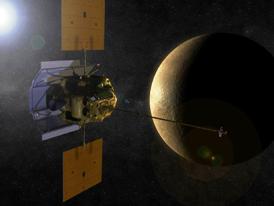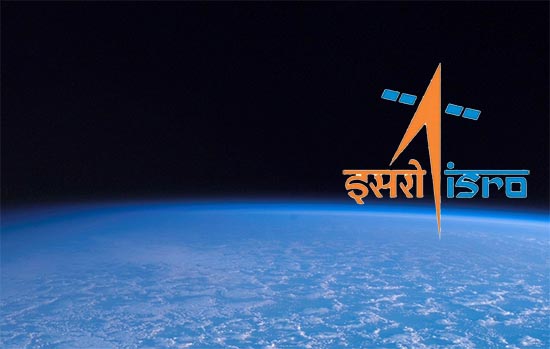
An artistic representation of NASA's Messenger spacecraft.
WASHINGTON (PTI): NASA's Messenger spacecraft has crashed into the surface of Mercury, ending its historic 11-year mission that provided valuable data and thousands of images of the planet.
Mission controllers at the Johns Hopkins University Applied Physics Laboratory (APL) in Maryland, confirmed that MErcury Surface, Space ENvironment, GEochemistry, and Ranging (MESSENGER) spacecraft impacted the surface of Mercury, as predicted, on Thursday.
MESSENGER was launched on August 3, 2004, and it began orbiting Mercury on March 18, 2011. The spacecraft completed its primary science objectives by March 2012.
Because MESSENGER'S initial discoveries raised important new questions and the payload remained healthy, the mission was extended twice, allowing the spacecraft to make observations from extraordinarily low altitudes and capture images and information about the planet in unprecedented detail.
Last month - during a final short extension of the mission referred to as XM2 - the team embarked on a hover campaign that allowed the spacecraft at its closest approach to operate within a narrow band of altitudes, 5?35 kilometres above the planet's surface.
On April 28, the team successfully executed the last of seven orbit-correction manoeuvres, which kept MESSENGER aloft for the additional month, sufficiently long enough for the spacecraft's instruments to collect critical information that could shed light on Mercury's crustal magnetic anomalies and ice-filled polar craters, among other features.
With no way to increase its altitude, MESSENGER was finally unable to resist the perturbations to its orbit by the Sun's gravitational pull, and it slammed into Mercury's surface at around 8,750 miles per hour, creating a new crater up to 52 feet wide.
"Today we bid a fond farewell to one of the most resilient and accomplished spacecraft ever to have explored our neighbouring planets," said Sean Solomon, MESSENGER's Principal Investigator and Director of Columbia University's Lamont-Doherty Earth Observatory.
"Our craft set a record for planetary flybys, spent more than four years in orbit about the planet closest to the Sun, and survived both punishing heat and extreme doses of radiation," said Solomon.
"Among its other achievements, MESSENGER determined Mercury's surface composition, revealed its geological history, discovered that its internal magnetic field is offset from the planet's centre.
"It taught us about Mercury's unusual internal structure, followed the chemical inventory of its exosphere with season and time of day, discovered novel aspects of its extraordinarily active magnetosphere, and verified that its polar deposits are dominantly water ice," said Solomon.
 Previous Article
Previous Article Next Article
Next Article











The Indian Air Force, in its flight trials evaluation report submitted before the Defence Ministry l..
view articleAn insight into the Medium Multi-Role Combat Aircraft competition...
view articleSky enthusiasts can now spot the International Space Station (ISS) commanded by Indian-American astr..
view article